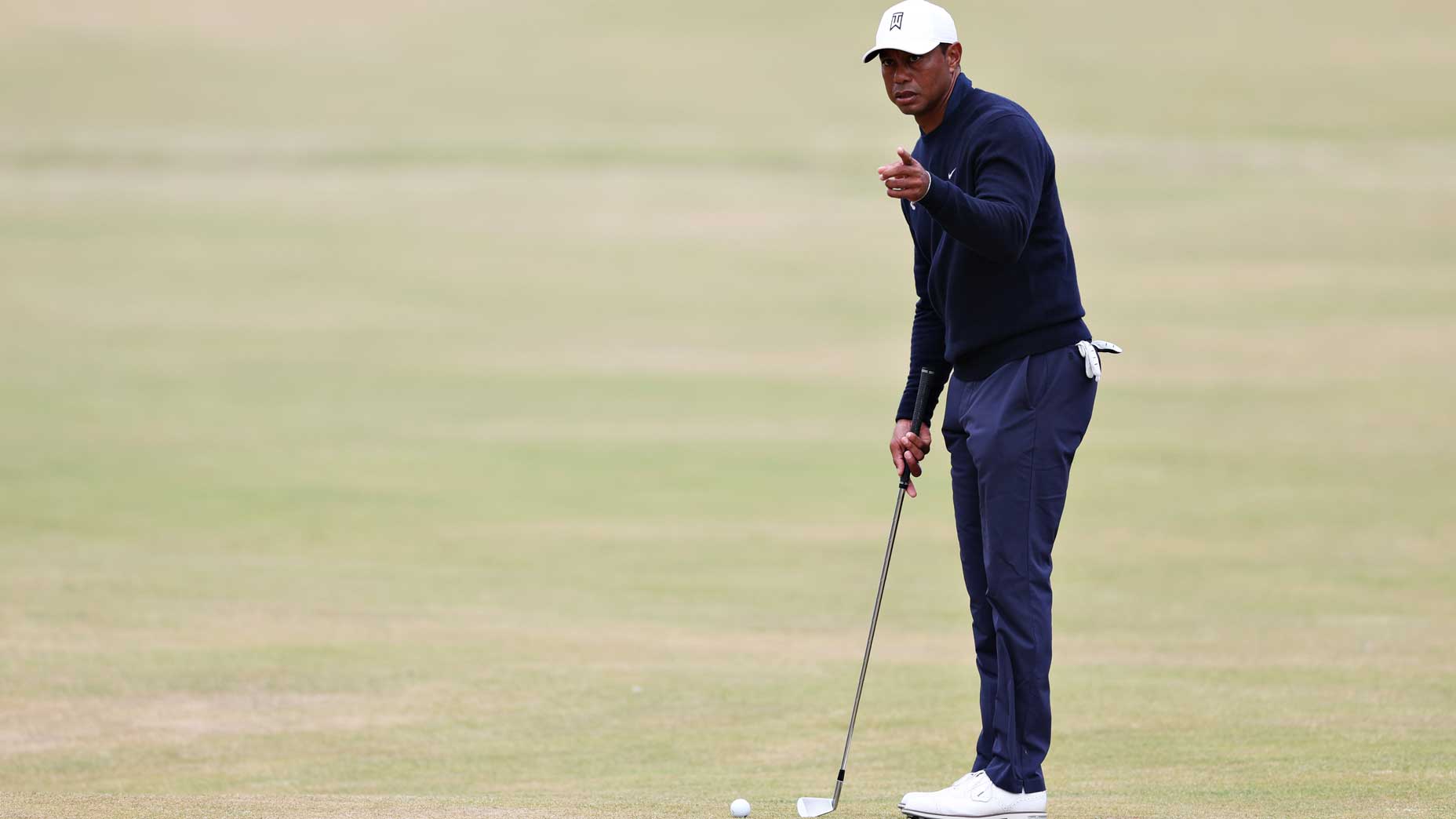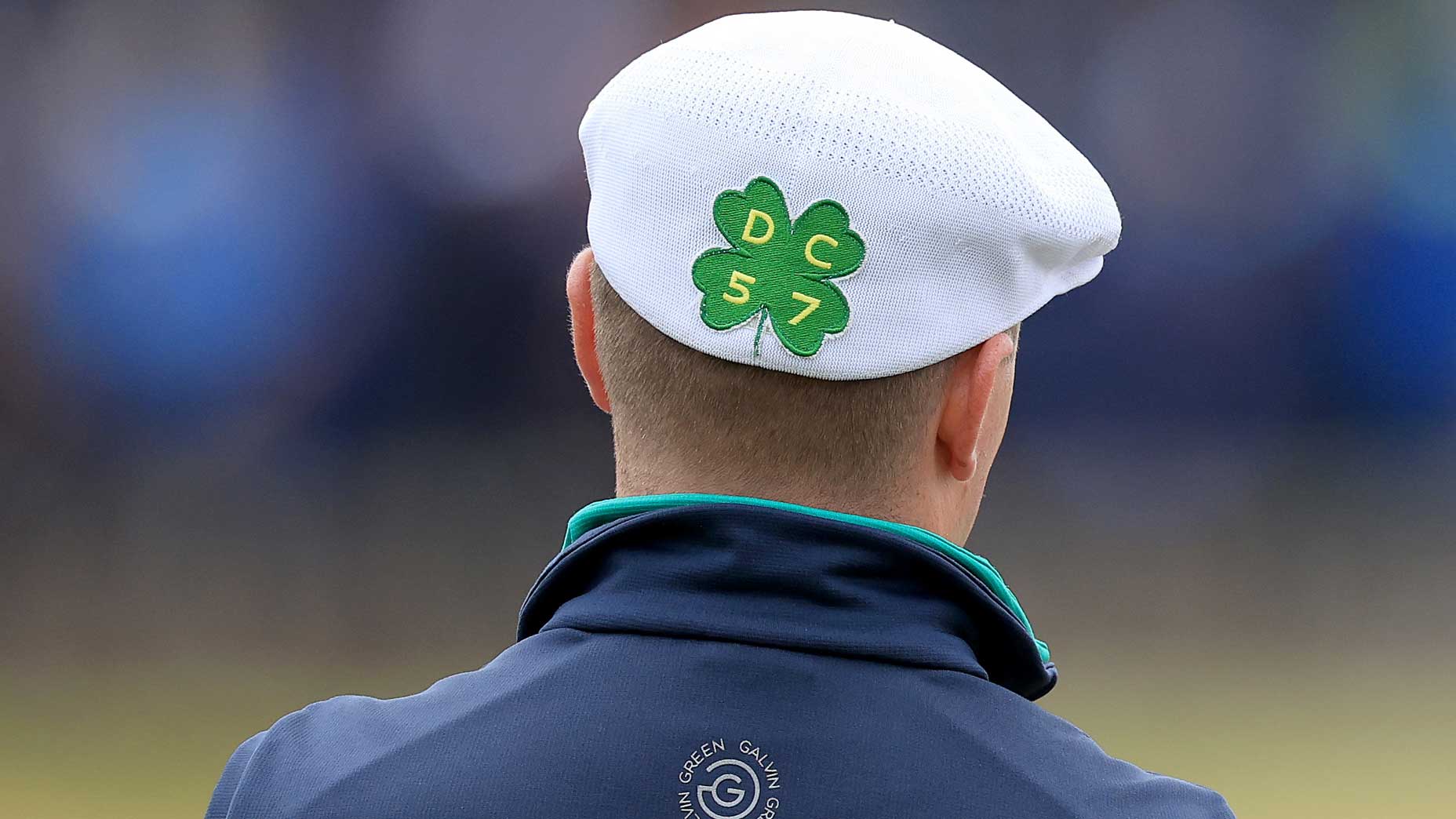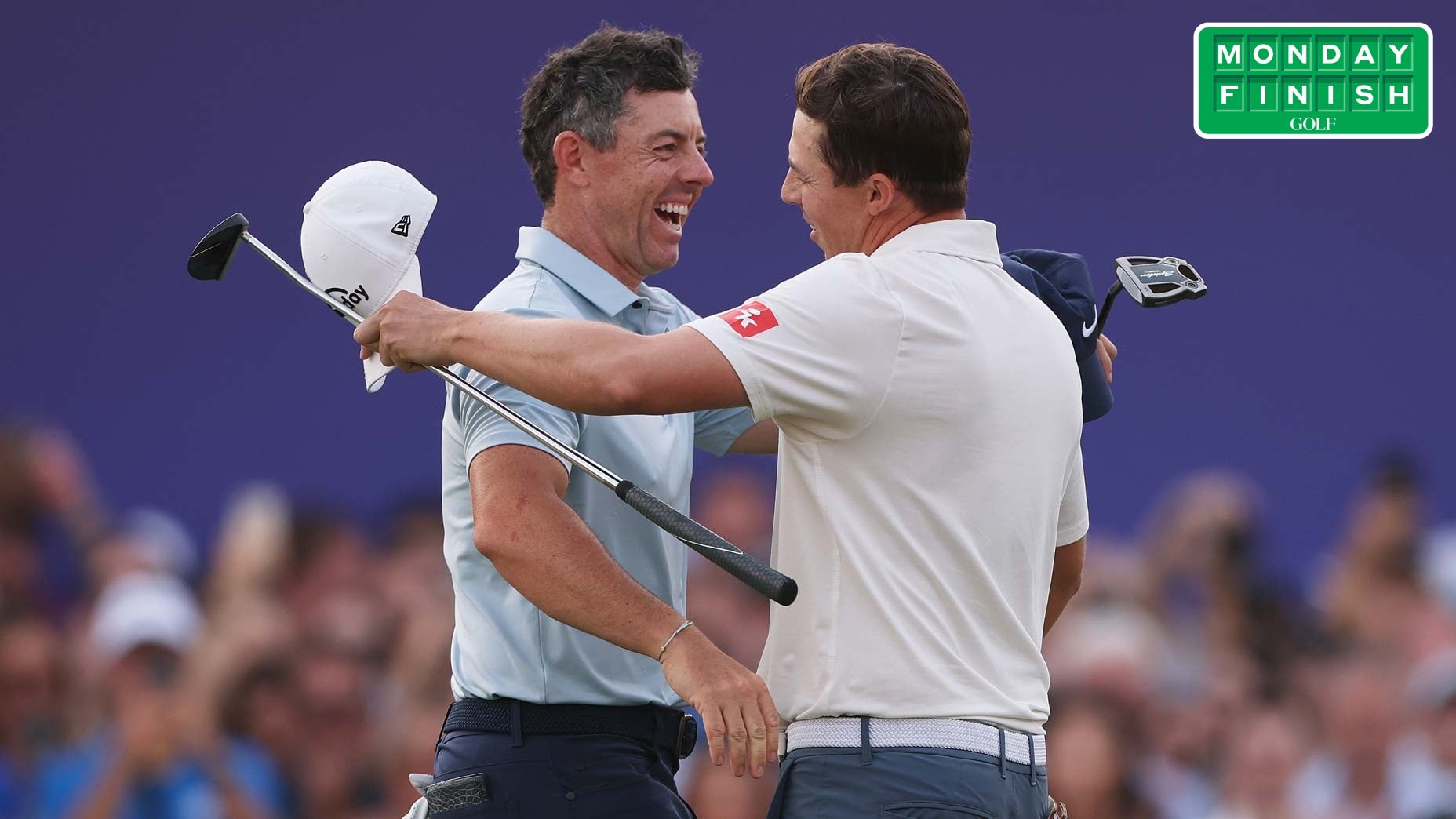ST. ANDREWS, Scotland — In fairness, there was a lot of it on TV. If you were keyed into the broadcasts there are probably plenty of things that you saw that I didn’t, including the full splendor of Cameron Smith’s final-round brilliance. But because I was lucky enough to make my first pilgrimage to St. Andrews to cover last week’s Open Championship, here are 10 things I saw, thought and learned.
1. Low scores didn’t mean boring golf.
Cameron Smith’s winning total of 20 under par equaled Henrik Stenson’s major championship record. That reinforced a suspicion that was circulating heading into the event: The Old Course doesn’t hold up to advancements in technology and training. In other words: the ball goes too far and the course is too easy.
Did that prove true? Yes and no. The “too easy” argument goes something like this: Even with extreme pins that made the Old Course’s setup as difficult as possible, Smith made his way to 20 under par and a horde of players were at his heels.
“I think we definitely are hitting it too far for the course probably, if I had to guess,” said Xander Schauffele after his final round. He wasn’t quite sure, but it seemed like a fair assumption.
The “not too easy” argument goes like this: It was super-firm, so the ball was rolling out like crazy. Irons were going 300-plus yards. Drivers were going 400-plus. Long holes were playing short and short holes were playing really short. The Old Course was missing its greatest defense — heavy wind — and even softened up on the weekend. Of course scores were low!
But there’s another compelling defense of the Old Course, regardless of score: Sometimes we complain about courses being too easy because it leads to uninteresting golf. We complain about courses being too short because it leads to driver-wedge everywhere. This course played short, sure. But it was playing so firm and so short that we were seeing approach shots hit with the longest clubs of all — 3-woods and drivers. There were five drivable par-4s and two reachable par-5s, which meant we saw plenty of long-range approach shots. We saw plenty of intriguing pitch shots and recovery plays around greens. It’s just that players were getting up and down for birdies instead of pars, hence the low scores.
(Listen to the complete Drop Zone podcast from St. Andrews below!)
2. St. Andrews knows how to throw a party.
This was my first time in Scotland, which meant it was my first time in St. Andrews, which meant it was my first time at an Open Championship in St. Andrews. What a town! I didn’t realize just how lively it would feel, with a seemingly endless number of places to get a coffee or a beer. As the tournament got underway, the coffee places and the beer places overflowed with cheery patrons. Every night the pubs would have to close (and, more importantly, stop serving) to get people to leave.
It’s hardly a unique take, but I fell in love with the timeless charm of St. Andrews, where the golf course is hundreds of years old and so are the houses of the people who live around it. People in town had memories of the 2015 Open, and the 2010 Open, and the 2005 Open and so on. The Open is meant to come to St. Andrews.
3. Pros hit the town.
The iconic Dunvegan, a pub just around the corner from the Old Course, is covered wall-to-wall with photos of pros who have stopped in for a pint (or, at the very least, a photo). There’s young Rory McIlroy. There’s young Dustin Johnson. There’s young Tiger Woods! It’s such a small, golf-mad town that pros walking the streets (plus some caddies and on-air golf personalities) get recognized and cheered, no matter their world ranking.
Looks like Max Homa did some guest bartending at the Whey Pat in St. Andrews today pic.twitter.com/Rzzfb0Oi7o
— Dylan Dethier (@dylan_dethier) July 17, 2022
While some largely stick to their houses or hotels the week of the Open, others make their way about town — especially those who have missed the cut. Max Homa, who missed the weekend by a single shot, was seen pouring (and presumably consuming) beers at the Whey Pat during Saturday’s action. Brooks Koepka and his wife Jena Sims were kicking it late-night at the Vic, St. Andrews’ closest thing to a nightclub. With everything in walking distance — and some pros eager to soak up the culture — the Open is one of the best places to see them in the wild, being normal human beings.
Tour Confidential: Cam Smith’s rise, Rory’s fall and St. AndrewsBy: GOLF Editors
4. Tiger Woods has mastered the bump-and-run 4-iron.
At this stage of his career Woods reminds me of Daniel Craig in the later James Bond movies. In theory, the game has passed him by — but then he proves that some of the old ways still work best. I noted this earlier in the week, so apologies for double-dipping, but one of my enduring memories from this Open will be Woods standing in the 18th fairway, 20 to 50 yards out, skittering Bridgestone balls along the ground, through the Valley of Sin and up onto the green.

Who chips with a 4-iron?! Only Woods, I’d say. He got one last chance to try the shot on Friday afternoon, playing his final hole of the week, and executed it to perfection, rolling one up inside four feet. (He missed the putt, but still.) The ground game lives on.
5. David Carey has golf’s flexiest logo.
Irish golfer David Carey had, appropriately, a four-leaf clover on the back of the driver’s cap he wore all week at the Open. But a closer look revealed that it wasn’t just the clover: The logo included DC 57. That’s in reference to the score of 57 that Carey shot during an Alps Tour event, the only 57 ever recorded in a tournament with world ranking points.

What did the 57 look like? It came at the 2019 Cervino Open, which is played at the par-68 Cervino Golf Club in Northern Italy. Carey made 11 birdies and zero bogeys in the record-setting round. The 26-year-old (understandably) still takes great pride in the accomplishment — hence the hat. He also isn’t afraid to stand out; he carried two drivers at the Open, where he relished in the crowd attention. “I mean, I’m a complete show off so the more people that’s there, the better,” he told the Irish Mirror.
6. We saw the Old Course from a different perspective.
Sunday morning, we took a plunge. Fellow dot-commers Alan Bastable, Sean Zak and I hoofed it to the West Sands, the beach adjacent the Old Course (and site of the iconic scene from Chariots of Fire) and took a plunge. It’s cool to see the game’s legendary ballparks from different angles, and this one included a craggy coastline, a castle and a bustling downtown just around the corner from the course. We didn’t last long — the water was 56 degrees — but came out refreshed. And ready to watch some golf.
Lots of golf writers soaked up the scene in St. Andrews this morning. @dylan_dethier, @alan_bastable and I took a plunge in the North Sea. pic.twitter.com/bZNae5RvAw
— Sean Zak (@Sean_Zak) July 17, 2022
7. JT had a warning.
Justin Thomas finished his final round as Rory McIlroy was warming up on the range. He offered praise for his friend but also some words of caution.
“I think that’s really underrated to be able to perform with those expectations and that pressure,” Thomas said of McIlroy. “So today’s going to be hard to win the golf tournament because it’s hard to win a golf tournament. It’s going to be really hard for anybody but especially him, because of the amount of people that are pulling for him.”
That’s not to say that McIlroy’s putts successfully dodged the hole on Sunday because he has so many people rooting for him. But it was interesting to hear Thomas’ perspective on the weight of expectations — and his reminder that tournaments don’t always follow neat storylines soon proved prescient.
8. End of the school year
Sunday at the Old Course felt a bit like the last day of school. Away from the final-round drama involving Rory and the Camerons there were several high-profile players facing uncertainty about a potential return to the Old Course — and about a return to major championships in general.
Paul Casey made it clear that he’d joined LIV clear-eyed; he knew there was a possibility he’d be banned from PGA and DP World tours as well as the Ryder Cup.
“I was fully aware of what might be,” Casey said. He added that he was aware his world ranking will plummet and said others have been talking about coordinating Asian Tour events to jack up their strength of field and potentially earn additional points in the meantime.
Sergio Garcia called his future with European golf into question and was unsentimental about the potential end to his St. Andrews’ playing career.
“Things come to an end. It’s the way it is,” he said.
How Rory McIlroy’s dream weekend dissolved into Cam Smith’s Open coronationBy: Dylan Dethier
Ian Poulter lamented his 62nd-place finish.
“It could well be my last one. It’s a shame it didn’t finish how I wanted it to,” he said.
Lee Westwood called every major a bonus at this point and said he was unlikely to be back to the Old Course as a competitor.
“I’ve been trying to soak it all in for the last six, seven years. I’m 50 next April. All these major championships and big events are a bonus really when you get to my age,” he said.
Jon Rahm lamented their absence from the Ryder Cup team. Rumors of Henrik Stenson’s imminent departure for LIV — and thus his removal as Ryder Cup captain — bounced around the stone buildings enclosing the Old Course.
It was a joy to soak in a golf tournament where the focus was the golf. But as the competition wrapped and the competitors moved on to the next thing, the uncertainty of professional golf’s future surged to the forefront again. St. Andrews was a glorious bubble. What happens when we leave it?
9. Rory felt like the home team.
I’ve never experienced anything quite like the aftermath of Tiger Woods’ win at the 2019 Masters. There was a collective euphoria in the air; everybody was floating. I’d never experienced that unanimity at a golf tournament; the closest thing would be a Red Sox playoff win at Fenway Park. Sunday felt that way for a while, when it seemed like a McIlroy win was in the cards. The crowd was going berserk right until the end, when they carried him up the 18th fairway, urging him to a miraculous chip-in eagle, cheering him and expressing their gratitude for the chase.
There were Cameron Smith fans, of course. And nearly everyone seemed delighted about him as a winner. But as the final group putter out, the Old Course’s stadium setup felt like being at a sporting event where the home team loses and everyone shuffles out of the stadium, quiet and disappointed.
Golf needs more home teams; it doesn’t work particularly well if everybody is just rooting for Rory because unless he does win, they’ll leave disappointed. But if and when he gets that next major, the party will be on.
10. The Old Course, one day later.
By Sunday night, St. Andrews seemed to have reached its capacity for party. The walk through town to our rental flat late that night included its share of tired, inebriated wanderers, looking ill or lost; Open Championship week is terrific but not sustainable.
But Monday dawned hot and glorious. The sun replaced the tourists and I stuck around to play some golf with Sean Zak and explore the town in its slightly quieted version. We breakfasted on bacon rolls. We sweated our way through a round at the Dukes Course, after which our cabbie told us the temperature (31 degrees Celsius, roughly 88 Fahrenheit) was the highest he’d ever seen in town.
By the evening we wandered over to the course to see what was still happening. The scene by 18 was pure and terrific; the bleachers will still up and accessible to anyone. We climbed up to find just one person in our section: Caleb, reading Ulysses in the front row.
Several groups came through, nearly all of them struggling to judge the pace and breaks around the hole location at 18. Some people watched from the street. Others looked on from the dreamy rooftop restaurant at Rusacks, the adjacent luxury hotel. It was a tranquil, welcoming scene, interrupted only by the clank of a tee shot hitting the roof of a parked van. Life at the Old Course was very much back to normal.












